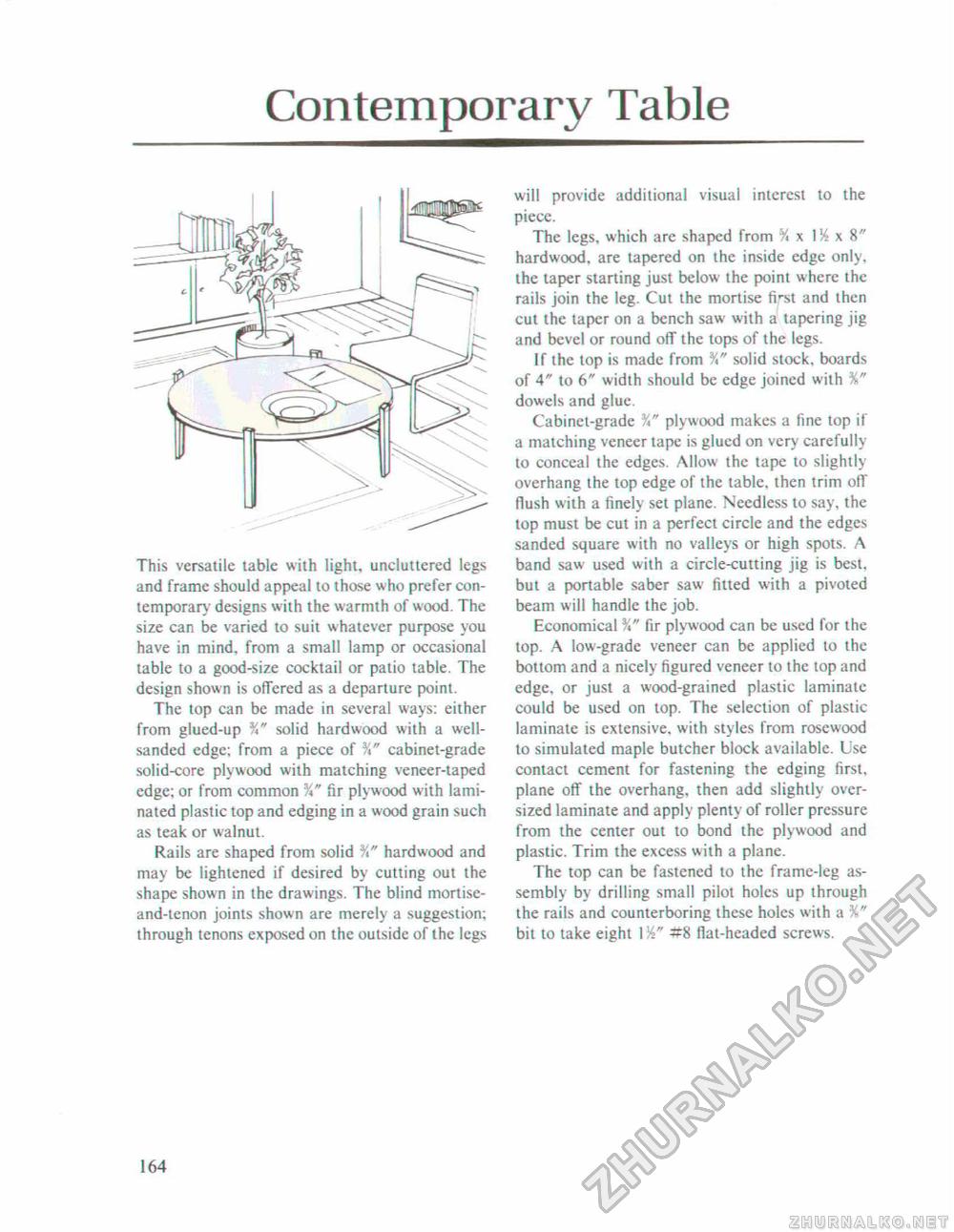Woodworker's Journal 101-Projects-for-Woodworkers, страница 171
Contemporary Table This versatile table with light, uncluttered legs and frame should appeal to those who prefer contemporary designs with the warmth of wood. The size can be varied to suit whatever purpose you have in mind, from a small lamp or occasional table to a good-size cocktail or patio table. The design shown is ofTered as a departure point. The top can be made in several ways: either from glued-up solid hardwood with a well-sanded edge; from a piece of %" cabinet-grade solid-core plywood with matching veneer-taped edge; or from common fir plywood with laminated plastic top and edging in a wood grain such as teak or walnut. Rails are shaped from solid hardwood and may be lightened if desired by cutting out the shape shown in the drawings. The blind mortise-and-lenon joints shown are merely a suggestion; through tenons exposed on the outside of the legs will provide additional visual interest to the piece. The legs, which are shaped from % x 114 x 8" hardwood, are tapered on the inside edge only, the taper starting just below the point where the rails join the leg. Cut the mortise first and then cut the taper on a bench saw with a tapering jig and bevel or round off the tops of the legs. If the top is made from solid stock, boards of 4" to 6" width should be edge joined with %" dowels and glue. Cabinet-grade %" plywood makes a line top if a matching veneer tape is glued on very carefully to conceal the edges. Allow the tape to slightly overhang the top edge of the table, then trim off flush with a finely set plane. Needless to say, the top must be cut in a perfect circle and the edges sanded square with no valleys or high spots. A band saw used with a circle-cutting jig is best, but a portable saber saw fitted with a pivoted beam will handle the job. Economical fir plywood can be used for the top. A low-grade veneer can be applied to the bottom and a nicely figured veneer to the top and edge, or just a wood-grained plastic laminate could be used on top. The selection of plastic laminate is extensive, with styles from rosewood to simulated maple butcher block available. Use contact cement for fastening the edging first, plane off the overhang, then add slightly oversized laminate and apply plenty of roller pressure from the center out to bond the plywood and plastic. Trim the excess with a plane. The top can be fastened to the frame-leg assembly by drilling small pilot holes up through the rails and counterboring these holes with a %" bit to take eight Vk" #8 fiat-headed screws. 164 |








